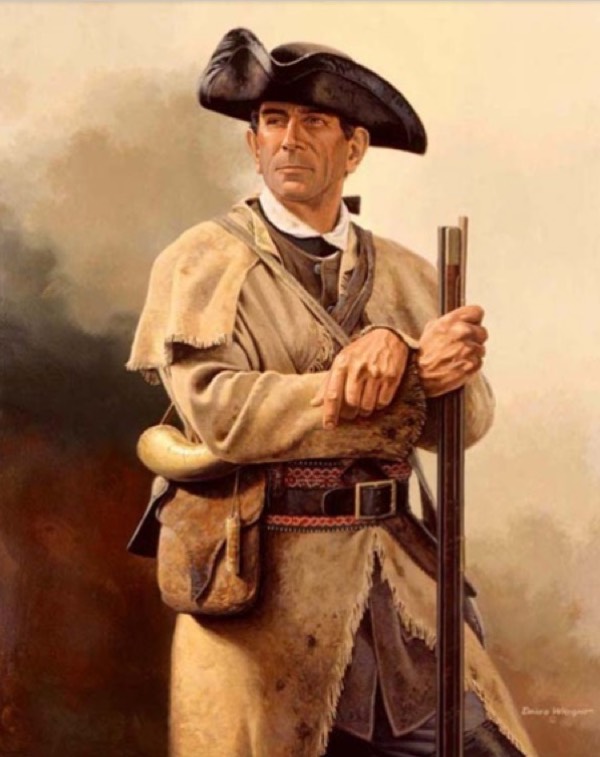Fergusson Diaspora
| Fergusson Diaspora |
| From Scotland to Ireland to North America (1700s ±) |
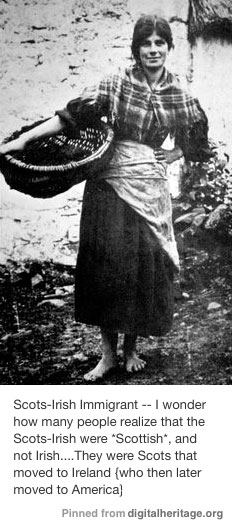 |
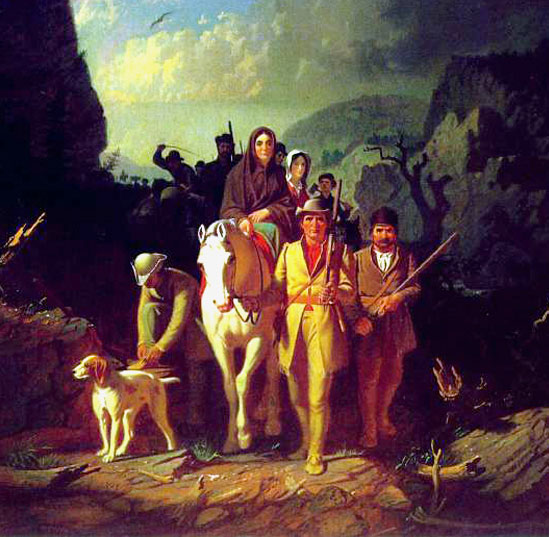 |
Daniel Boone escorting settlers through the Cumberland Gap into Kentucky (painting by George Caleb Bingham). (Ed.Note. Many, maybe most, of these settlers were first-fourth generation Scots-Irish immigrants from Virginia and North Carolina) |
The Scots-Irish (sometimes erroneously called “Scotch-Irish”; “Scotch” being a drink, not a culture) are not in fact Irish at all, except by an accident of geography. Their origins actually lie primarily in the Lowlands of Scotland were they were known for their fighting prowess. Beginning in 1609 King James VI of Scotland started relocating these Scots to Northern Ireland to bring peace to their native Ango-Scottish border country and also to use them as fighting men to suppress the native Irish. A second wave of Scots moved from Scotland to Northern Ireland in 1689. Beginning in 1718, just a few generations after arriving in Ireland originally, droughts and rising rents brought about a mass exodus of these Ulster-Scots to North America. Although they spred throughout the frontier areas of the American Colonies and Canada, ultimately the majority of them settled in the American South, especially in the Appalachians.
| The Clearances – From Scotland to North America and Elsewhere (1800s ±) |
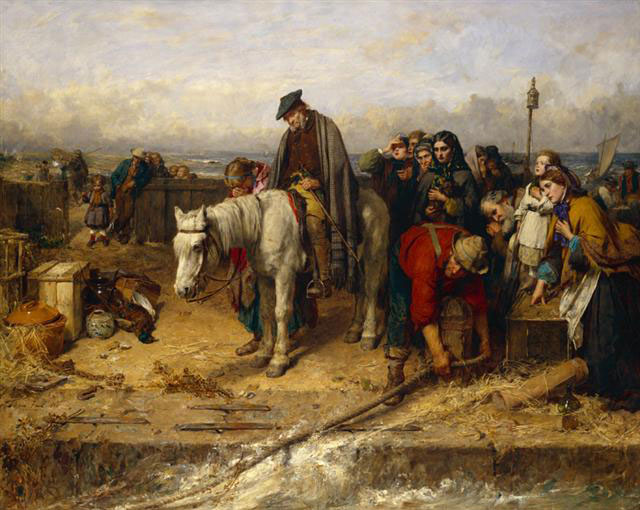 |
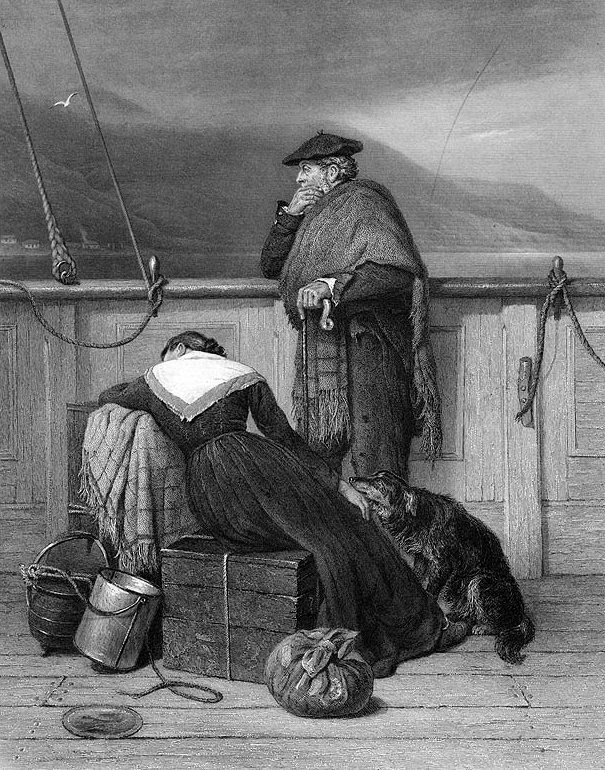 |
The “Clearances”, from the late 1700s through the late 1800s, affected both the Scottish Lowlands and the Highlands.
The Highland Fergussons, and most of their fellow Highlanders, were driven off their lands after the introduction of sheep into the Highlands (the Highland Clearances). Many lost their Clan territories and migrated to the cities, south to England and to Ireland. Those left in the Highlands were generally reduced to poverty and many earned their livelihood by performing menial tasks foreign to the Highlanders.
Ferguson’s living in the lowlands were affected because the population in rural areas was growing but improvements in farming and agricultural techniques meant fewer workers were needed.
Many Lowland Scots moved to the cities in search of work and lodgings. There was widespread unemployment and homelessness. Many people lived in wretched conditions in overcrowded, poorly lit urban dwellings. Emigration to North America and elsewhere offered many Lowland Scots the chance to forge a better life.
Understandably many of the sailing ships that left Scotland during this period contained many Fergussons who chose to join earlier Highland and Lowland emigrants to Canada, the U.S., Australia, and South Africa.
Between 1815 and 1870, around 170,000 Scots emigrated to Canada – locations where the customs of Scotland, the tartan and the pipes, and the heritage of their forebears could be exercised freely. The Canadian Census of 1871 shows that an incredible 157 out of every 1000 Canadians were of Scottish origin.
| The Highlander immigrants who helped build America |

Many Highlanders left Scotland in the 18th century. Picture: Wikimedia/ CC
Read this article in: The Scotsman (Scotland’s National Newspaper)
